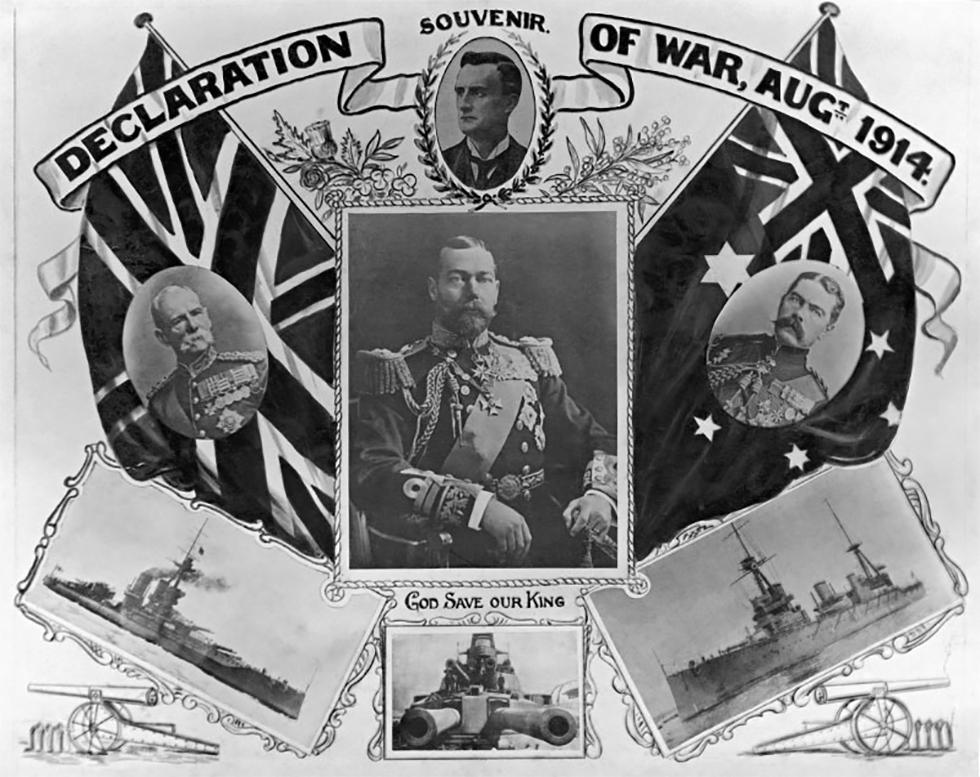


About this record
This poster was produced in August 1914, as a souvenir of the declaration of World War I. King George V, British monarch from 1910 to 1936, appears in the centre of the poster above the words ‘God Save Our King’. To his right is the Union Flag, the national flag of the United Kingdom also known as the Union Jack, and a photograph of Lord Roberts, hero of the Empire. To the King’s left is the Australian flag and a photograph of Lord Kitchener, the British Secretary of State for War. At the bottom of the poster are photos and illustrations depicting the main Australian warships and some old-style artillery weapons. The man at the top of the poster has not been identified, but may be the Secretary of State for Foreign Affairs, Edward Grey. On 15 August 1914, the creators of this poster – Hyman Cohen and Frederick Norman Cecil Adair – applied to the Commonwealth for copyright of the design.
Educational value
- When Britain declared war on Germany on 4 August 1914, most Australians, who had strong ties to the ‘mother country’, responded with great enthusiasm. Posters such as this one were a popular way for people to show their support for the war and the Empire. However, most Australians had little idea of how long, and how devastating, the war would prove to be. At that time, most people living in Australia were known as British subjects (it was not until 1949 that the status of ‘Australian citizen’ was created under the Nationality and Citizenship Act).
- The declaration of war came in the middle of a federal election campaign in Australia. Even before war broke out, Prime Minister Joseph Cook and Opposition Leader Andrew Fisher had pledged their full support for the British Empire. In a speech at Horsham, Victoria, on 31 July 1914, Cook said, ‘Remember that when the Empire is at war, so is Australia at war … all our resources in Australia are ... for the preservation and the security of the Empire.’ On the same day, in Colac, Fisher declared, ‘Australians will stand beside our own to help and defend her [Britain] to our last man and our last shilling.’
- During the course of World War I, approximately 420,000 Australians volunteered to serve in the Australian Imperial Force (AIF), and many more attended medical examinations but were rejected. The AIF’s name acknowledged Australia’s national identity while at the same time declaring its allegiance to the British Empire. Of the 324,000 members of the AIF who served overseas, more than 60,000 were killed and 156,000 were wounded or taken prisoner.
- In 1914, the Australian public celebrated its allegiance to the British Empire in a variety of ways. Britain was widely referred to as ‘the mother country’; school children swore allegiance to the King and learned about the Empire and its values through textbooks, songs and plays; and images of the King were displayed in schools and other public buildings. Empire Day was celebrated each year on 24 May – the birthday of Queen Victoria – with gun salutes, displays of the Union Jack, patriotic music and speeches, and street carnivals with bonfires and fireworks.
Related themes
Need help with your research?
Learn how to interpret primary sources, use our collection and more.


